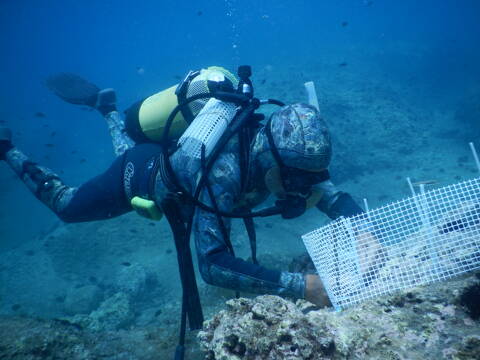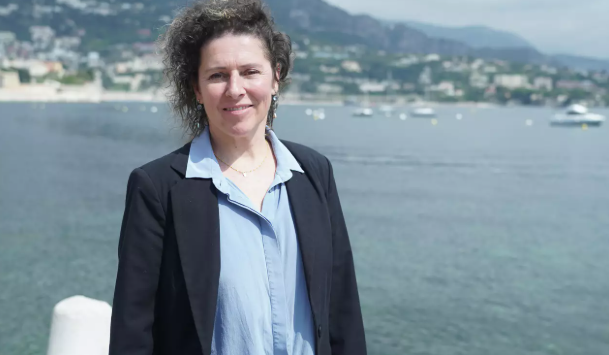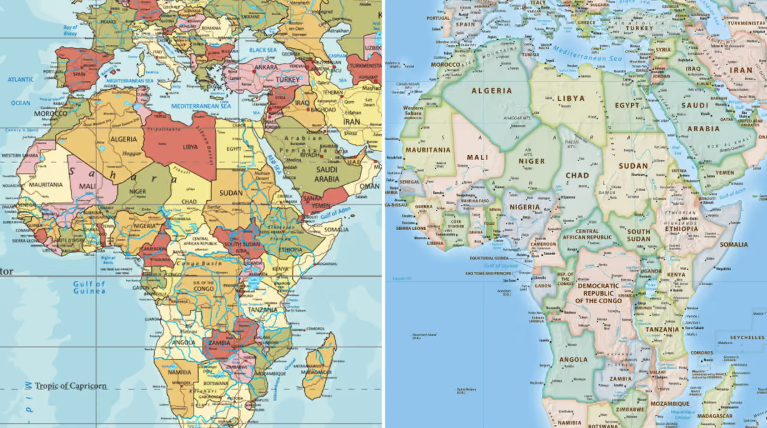Ocean Watch (8/10)
Professor of Ecology at Côte d’Azur University, Luisa Mangialajo is a specialist in the large brown algae forests of the Mediterranean. She shares insights on her work dedicated to preserving cystoseira species, which are essential for maintaining marine biodiversity.
She approaches the edge of the jetty. The seawater is clear. At the bottom, sea urchins can be seen.
“They are very active herbivores at night,” explains Luisa Mangialajo, professor of ecology at Côte d’Azur University, “and when their population grows significantly, they can completely wipe out a brown algae forest within a few years.” These large algae, an essential ecosystem for marine life in temperate regions, have been at the heart of her research for over 20 years.
The Birth of a Passion
“I’ve always had a passion for the sea in general, and especially for marine life. Even as a little girl, I loved searching for small shells on the beach,” she recalls.
Early on, she took up diving. “To be able to observe ecosystems and organisms in their natural environment—the fish, but also gorgonians, coral, sponges, and algae.”
Understanding and Seeking Solutions
Driven by an insatiable curiosity for marine life, she decided to make it her career. In Genoa, she pursued studies in marine environmental sciences to fulfill her dream. “I chose to focus more on biology and ecology,” she explains. She specialized in studying the large brown algae forests of the Mediterranean, known scientifically as Cystoseira. “In recent decades, we have observed a significant decline. I wanted to understand why and see if there might be solutions to limit it.”
Why Are Marine Forests Threatened?
This decline is worrying because these large brown algae, which cling to rocks, perform photosynthesis and support biodiversity. “They sustain an entire food web formed by herbivores and predators at multiple levels, including iconic fish like groupers, but also the Mediterranean monk seal, a species considered endangered by the IUCN (International Union for Conservation of Nature).”
“Highly sensitive to declining water quality (turbidity, presence of pollutants like pesticides), brown algae are also heavily impacted by coastal concrete development, especially those growing in shallow waters. But one of the biggest causes of decline is the proliferation of herbivores such as sea urchins, which is generally linked to overfishing of their predators. They can rapidly graze down the forests, leaving behind true overgrazed deserts.”
And that’s not all. “We recently discovered that salema fish (saupes) graze on the branches and especially the reproductive structures of Cystoseira, preventing the algae from reproducing and causing long-term decline.”
The number of these grazers has increased in recent decades.
Reasons for Hope
“These forests have not disappeared everywhere. Some populations remain very healthy, especially in island environments that must be protected.”
Luisa Mangialajo also sees hope in the growing awareness of their importance and vulnerability. “This awareness now allows us to move forward, protect them, and improve the health of degraded ecosystems. In 2024, the Nature Restoration Law approved a list of 12 Cystoseira species as priority habitats to restore at the European level,” she notes. For several years, the scientist has studied “how to facilitate natural restoration or intervene by replanting or using seeds.” These tests are conducted on a small scale, ensuring protection of young algae forests from grazers by using nets (photo opposite).
How Can We Act Locally?
She suggests simple actions in daily life. “Reduce the use of chemical products for cleaning and maintenance that inevitably end up in the sea.”
She also recommends being careful on beaches and rocky areas not to uproot organisms or trample them. “Cystoseira can live for several decades. When you pull out an algae including its base, it doesn’t regrow—it’s like uprooting a 40-year-old tree.”
Finally, on your plate, she encourages “choosing seafood from sustainable fishing.” For example, eating more herbivorous fish like salema can help contribute to the conservation of marine forests.
Next Monday, look for the 9th episode of the series « Ocean Watch, » focused on documentary filmmaker Jérôme Esplat.

Source: nicematin




